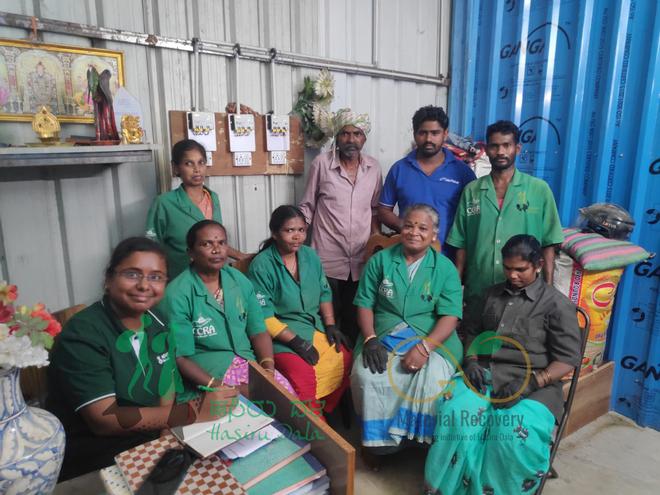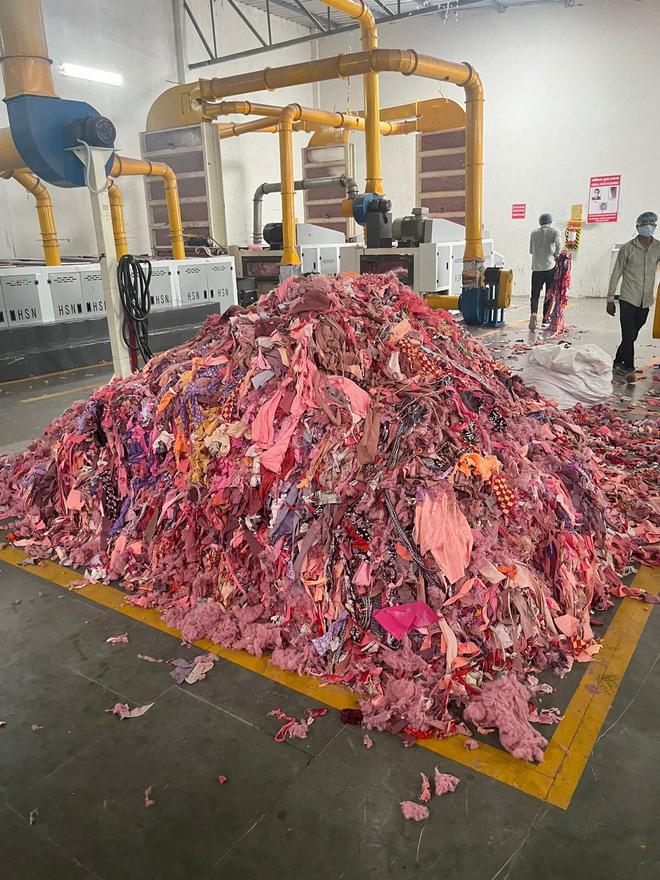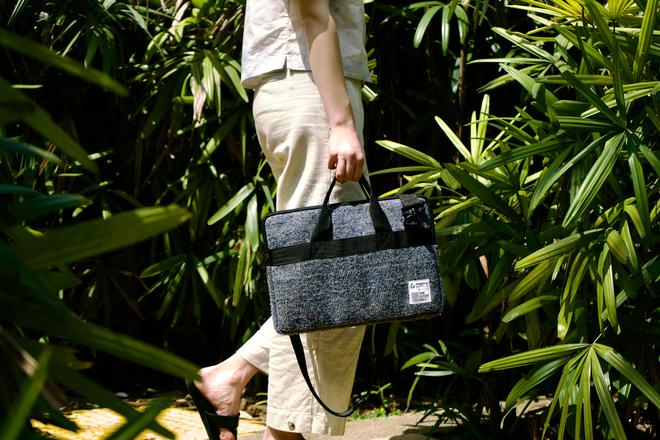Late last month, as industry experts presented their offerings at Bharat Tex — one of the world’s largest textile events — two organisations from Bengaluru marked their presence with a rather unique offering: felt apparel, and accessories. The project is a collaboration between Hasiru Batte (an initiative by Bengaluru-based Hasiru Dala Trust) and The Good Felt. The latter is a project by Netherlands-based Enviu, an organisation that helps build new companies (such as Bengaluru’s Khaloom) across the clothing production chain that turn waste into value.

Ina Bahuguna, programme manager for Recycling, Livelihood and Green Jobs at Hasiru Dala, a social impact organisation that works with waste pickers, explains how they sent 250 kgs of white old clothes (from the city’s JP Nagar and Domlur facilities) to the Netherlands in August 2022, to be converted into felt material. “This was a pilot to test if Indian post-consumer textile waste is good enough to be made into felt material. The pilot was successful, and Enviu started looking for partners in India who could make felt and the search ended in Panipat,” says Ina, adding that Hasiru Batte’s role is to collect textile waste from households and sort it according to TGF’s requirements (all whites, for instance) and send it to their partner recycling facility at Panipat to be made into felt material.

But why felt? Anurag Jain, CEO of The Good Felt that launched in September 2023, says that felt aka a non-woven material “stands out as one of the most versatile yet underrated materials in the textile industry”. He says it boasts several key advantages: it demands minimal infrastructure, is highly recyclable, and operates within a completely circular system. “Through our manufacturing of felt, we have the capability to process a wide array of discarded textile waste, regardless of its composition or quality, provided it meets cleanliness standards,” he says.

Since the inception of TGF, the team has diverted over two tonnes of textile waste. “The applications are endless but at present we are focussing more on acoustic panels, and fashion and lifestyle accessories,” says Anurag, who has also collaborated with brands such as Gurugram-based Jaggery Bags and Can of Juice, a design studio in Bengaluru.
Anurag, who aims to divert 5,000 tonnes of textile waste from going to the landfills in the next five years, says a significant hurdle they encounter revolves around the perception of textile waste among Indians. “The aim is to find a solution to the large volume of textile waste that goes into landfills and poor work and living conditions of waste collectors in India. We are working on it by developing non-woven materials (felt sheets) out of the discarded waste,” explains the NIFT and Parsons School of Design (New York) graduate.

As far as procurement goes, one of the primary challenges lies in the lack of understanding among many households regarding the importance of segregating their waste. “Specifically, when it comes to textile waste, there is a critical need for individuals to wash their clothes before handing them over to waste collectors. Contaminated clothes pose a substantial obstacle for textile recyclers, as despite their best efforts and intentions, these items often end up in landfills,” explains Anurag, adding that there are challenges on the purchasing side too. “There remains a lingering taboo surrounding textile waste and recycled clothing. Many consumers still view wearing recycled clothes as demeaning and hesitate to embrace the practice of purchasing used materials. However, there is a shifting tide as awareness grows, particularly among the younger demographic in India.”
While they are currently headquartered in Bengaluru, Anurag plans to set up a textile waste recycling centre “to monitor all the textile waste that comes to us which can help us develop even better non-woven materials and increase the magnitude of our impact”.

Ina elaborates on how, after a decade, textile waste has increased as the fast fashion impact can be seen in landfills. “People are not conscious buyers. What colour will suit them is a priority before what material they are wearing. Mixed material is a threat to the environment and humans as microplastics enter our body causing lung damage and cancer,” she says, adding that there are very few policies related to textile waste management.
“We don’t see responsible brands and manufacturers. There is a great responsibility on this generation to pass on a cleaner environment to the next generation,” concludes Ina, who is now planning to establish an aggregation centre (textile recovery facility) in Bengaluru, and a repurpose project wherein women from the waste picker community can make items out of textile waste such as key chains, bags and jewellery.







